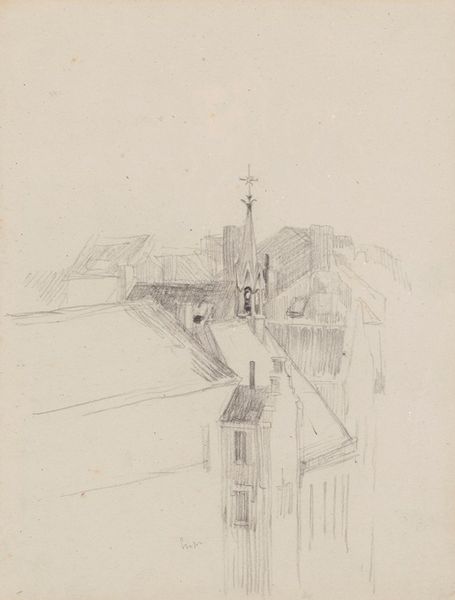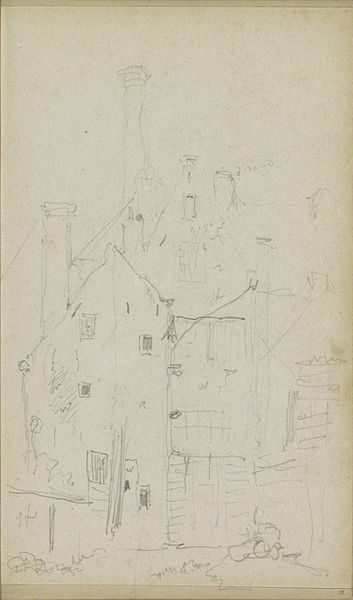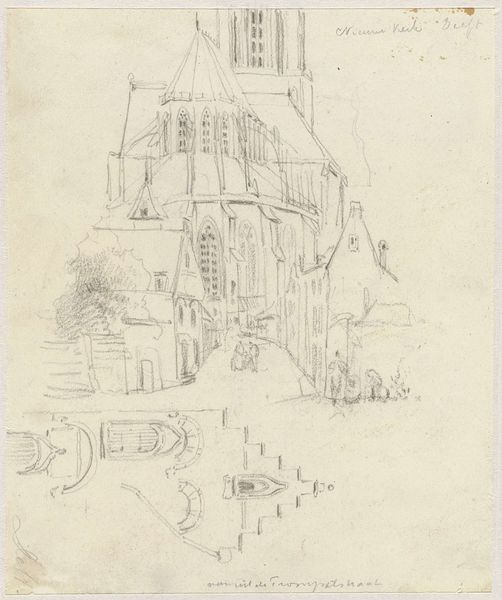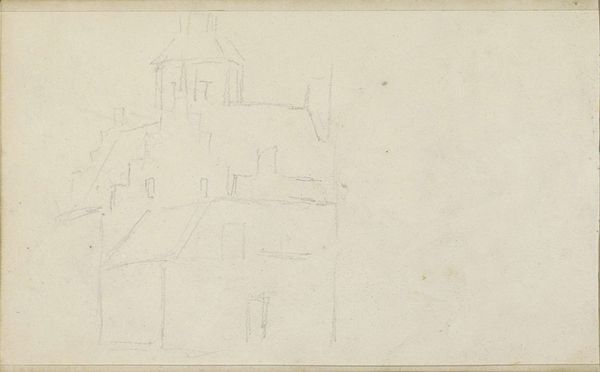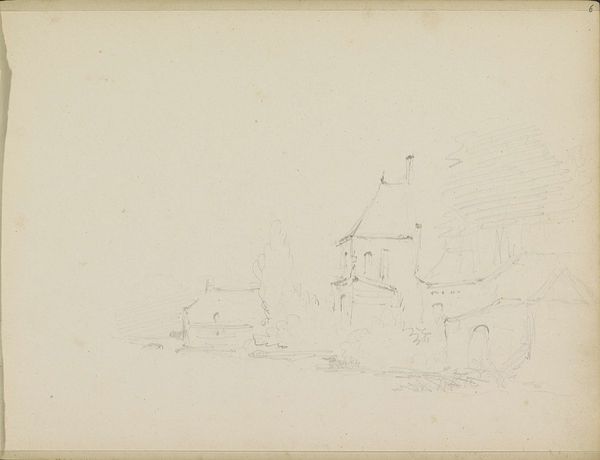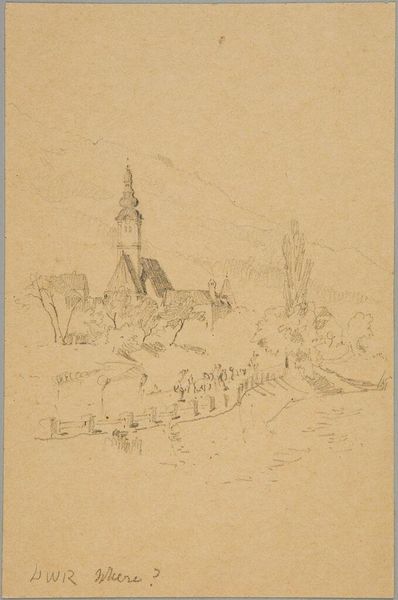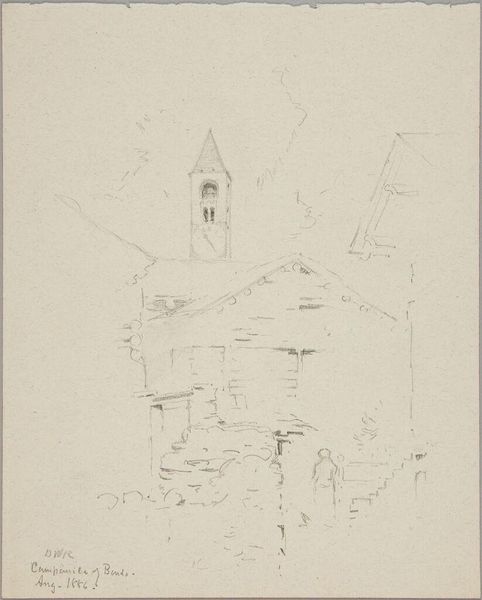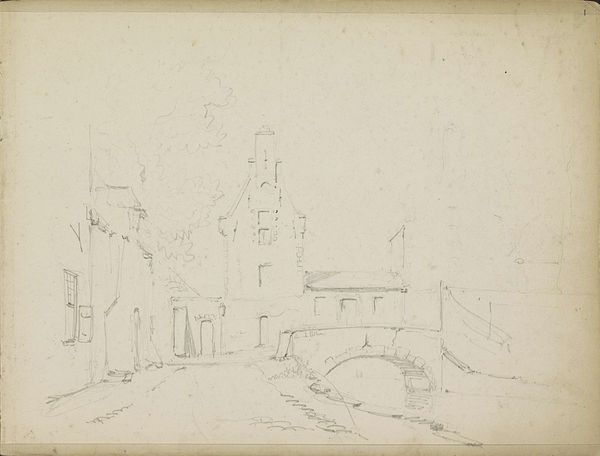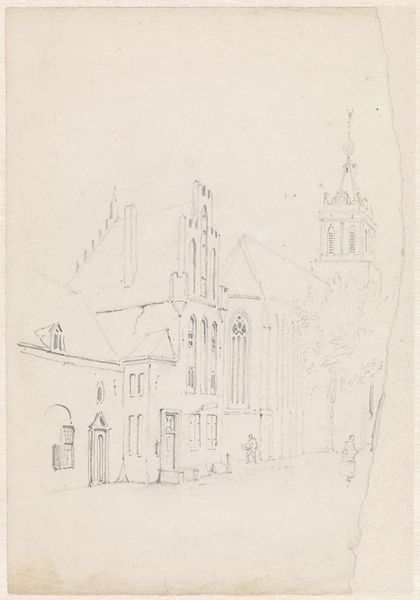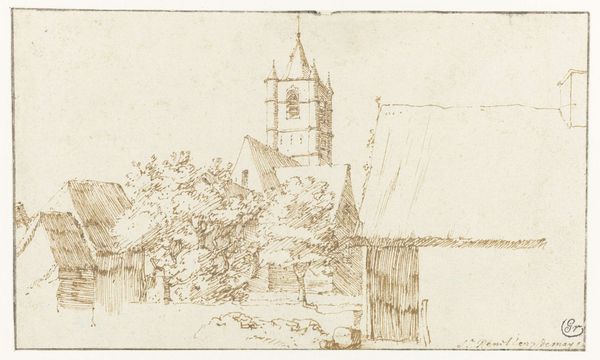
drawing, pencil
#
drawing
#
pencil sketch
#
landscape
#
pencil
#
cityscape
#
realism
Dimensions: height 160 mm, width 200 mm
Copyright: Rijks Museum: Open Domain
Editor: This pencil sketch, titled "Schets van een stadsgezicht (Haarlem?)," made sometime between 1828 and 1897 by Adrianus Eversen, is delicate and fleeting. It really feels like just a captured moment in time. What jumps out at you when you look at it? Curator: Immediately, I'm drawn to the visible process. Look at the pressure variations in the pencil strokes! Eversen is showing us not just *what* he saw, but *how* he saw it, the very act of his rendering. Consider the ready availability of the pencil itself - the accessibility it afforded Eversen in documenting this cityscape. It speaks to the democratizing effect of industrial production on artistic creation. Editor: That’s interesting. I was focusing on the composition and the implied architecture. Curator: But isn't the *materiality* of the pencil integral to our understanding of the “architecture” you mention? Eversen is choosing a readily available tool for rapid documentation. The lack of heavy preparation – think canvas priming, paint mixing - gives us immediate insight into 19th century urban development through accessible tools. Does the apparent incompleteness change your reading of the urban scene? Editor: I guess it highlights the changing nature of cityscapes, that it's a moment captured, not a finished monument. The sketchiness echoes that idea of fleeting change. Curator: Precisely! And, the ease of production and consumption that's implicit in the pencil making allows us to engage directly with the material reality of a 19th century artist interacting with a quickly evolving urban center. Editor: I see what you mean. Thinking about it that way reveals a completely different aspect of the artwork, and considering how easily it was produced changes how I view the content of the piece too. Curator: Indeed, it’s about understanding the means of artistic production, the available tools, and how they shape and record society.
Comments
No comments
Be the first to comment and join the conversation on the ultimate creative platform.

